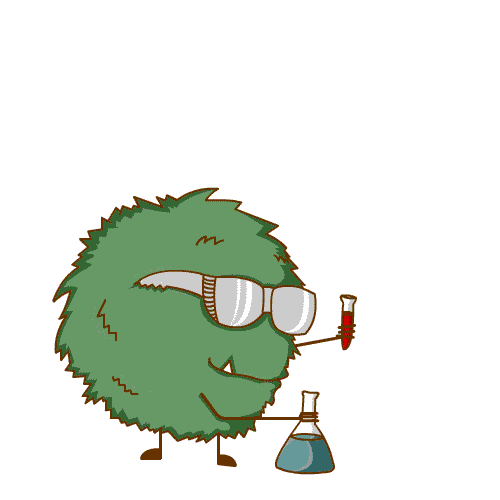
Since June this year, I’ve been posting daily, only missing one or two days. That has been possible because I was on semester break and had a lot of time. This break ended Monday and contrary to my expectations, it already drains me a lot.
Writing my stories takes some time, researching the material and providing good sources for you to look through takes even longer. And I just don’t have the energy to do that every day, not when I’m supposed to study.
But I don’t want to stop writing, I don’t want to stop providing you with stories, especially because we’re still in the middle of one. I just need to … slow down.
So the new parts of the story won’t come out every day now. Instead, you’ll get small posts with interesting stuff I learned that day (or the day before), broken down for non-biologists. That keeps you entertained (hopefully) and me sane. @suesa
And every few days, you’ll get a new story, for which you probably followed me in the first place. I won’t be able to provide a list of sources every time for this kind of posts. The source is the lectures I’ve been in and they’re
- In German
- Not available for everyone.
The innate vs. the adaptive immune system
I always assumed it’s common knowledge that we have two kinds of immune system, but after listening to many people’s reasons to not vaccinate, I realized that might be a misconception.
Aside from all the “autism” and “aluminium” cries, there’s one reason I’ve also heard several times.
I want my immune system to naturally take care of it.
Naturally. Well, naturally is good, isn’t it? Vegetables are natural and healthy. Burgers are unnatural and unhealthy. Jellyfish are natural and …. Wait. I don’t think jellyfish are healthy. Maybe for turtles, but not for us. Well, still. Clothing is unnatural and unheal … no that’s wrong too.
Thing is, just because something is natural or artificial doesn’t make it good or bad. That said, the protection achieved through vaccinations is not artificial. The means of delivery might be, but the bodies reaction is as natural as it can get. @suesa
But let’s start with the basics.
Our body always has certain protections against pathogens. Our skin as a barrier, our stomach acid to melt their faces off kill them. Phagocytes and natural (there’s that word again, I’ll give you that) killer cells take care of many unwanted things entering our bodies. But this immune reaction is the same every time.
And the worst thing?
The innate immune system doesn’t remember. It doesn’t know the best way to fight a pathogen, it does the same thing every time.
But it has help! Enter:
When the phagocytes of the innate immune system encounter a pathogen, they collect some samples and offer them to cells of the adaptive immune system, called lymphocytes. Those cells do remember (at least some of them).
T-lymphocytes (a special kind) learn how the pathogen looks from the phagocytes. They then clone themselves several times (to increase the number of helping “hands”) and then swarm out to do their jobs (which I will explain in a different post).
When their job is done, about 90% of them kill themselves (= Apoptosis). The remaining 10%, those are interesting.
They remain in the body, with all their knowledge on how this one pathogen looked. And the moment it enters the body again, they’re there. They know. They remember.
And they get rid of the pathogen a lot faster than the last time, shortening the time in which the pathogen can wreak havoc and significantly decreasing the damage.
For the T-lymphocytes to remember, there needs to be a first infection. In many cases, this can end deadly. Measles killed about 2.6 million people each year before vaccinations. My own great-grandmother recently told me how many of her friends died of diphtheria while she barely made it through.
So the initial infection might not be survived!
Enter vaccinations.
They either contain a dead or a weakened strain of a pathogen. The innate immune system doesn’t care though, it notices the foreign proteins (everything is made of protein) and delivers them swiftly to the adaptive immune system which begins the usual reaction.
Of course, that reaction includes certain symptoms of being sick, even a fever. Your body thinks it is having an emergency situation.
After your body has fought off the foreign “pathogens”, your T-lymphocytes remember. And if you’re ever infected with the actual dangerous, living pathogen? They react fast enough to save you from death.
So no, the way your body was introduced to the pathogens was not natural, but the natural way might have killed you. And the immunization you have after the vaccination is as natural as it gets.
Because it’s not the vaccination that protects you, it’s your own body.
Give it a helping hand. Give it the chance to learn in a less dangerous situation.
Your T-lymphocytes will appreciate it.
First picture taken from pixabay.com, rest is scribbled by me
Source: Lecture about Immunology, simplified by me
Got a scientific topic which you want to see as a story? Leave me a comment!
You want to support scientists on Steemit? You are a scientist on Steemit? Join the #steemSTEM channel on steemit.chat and connect with us!
STEM is an acronym for Science, Technology, Engineering and Math

